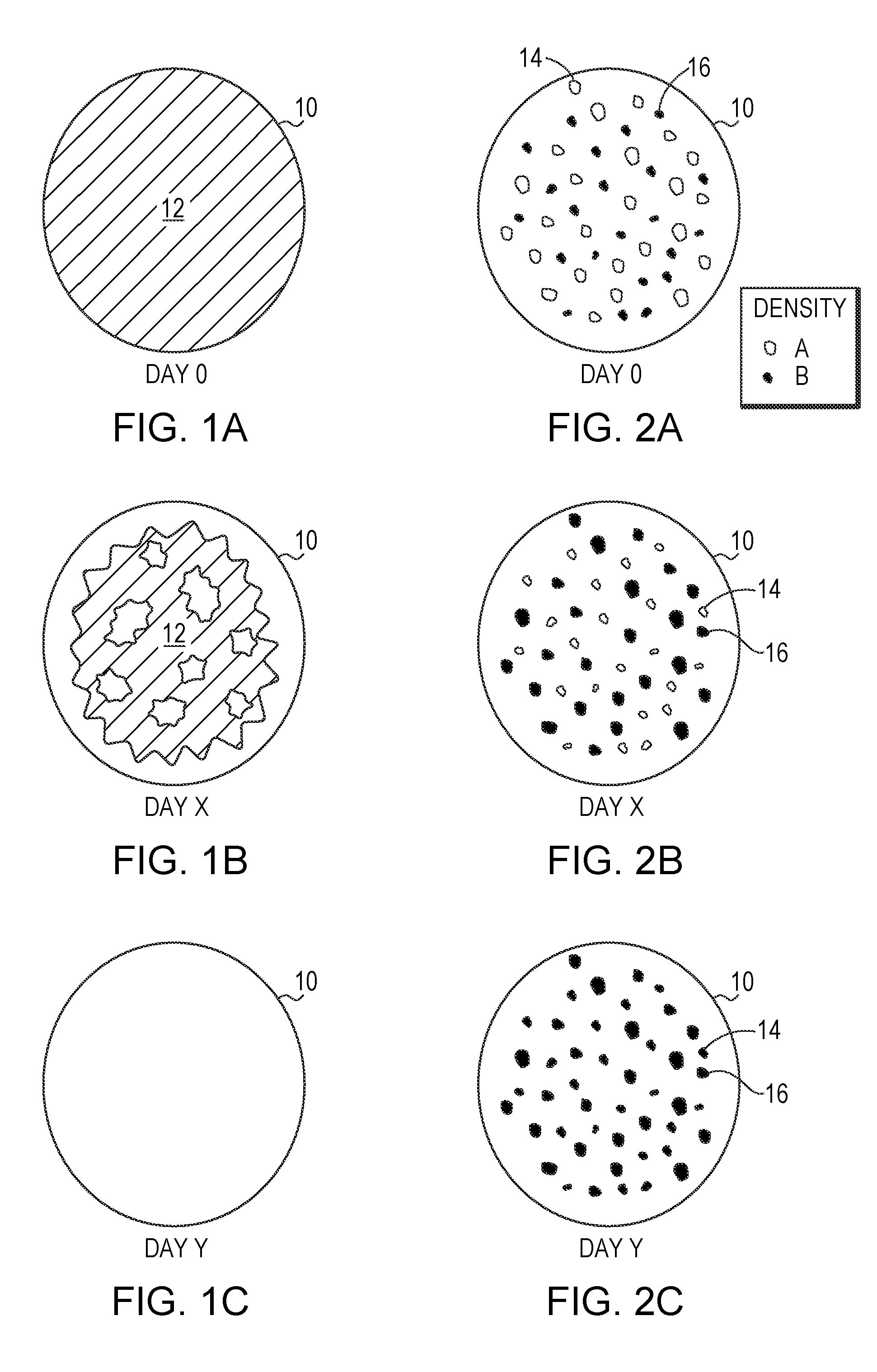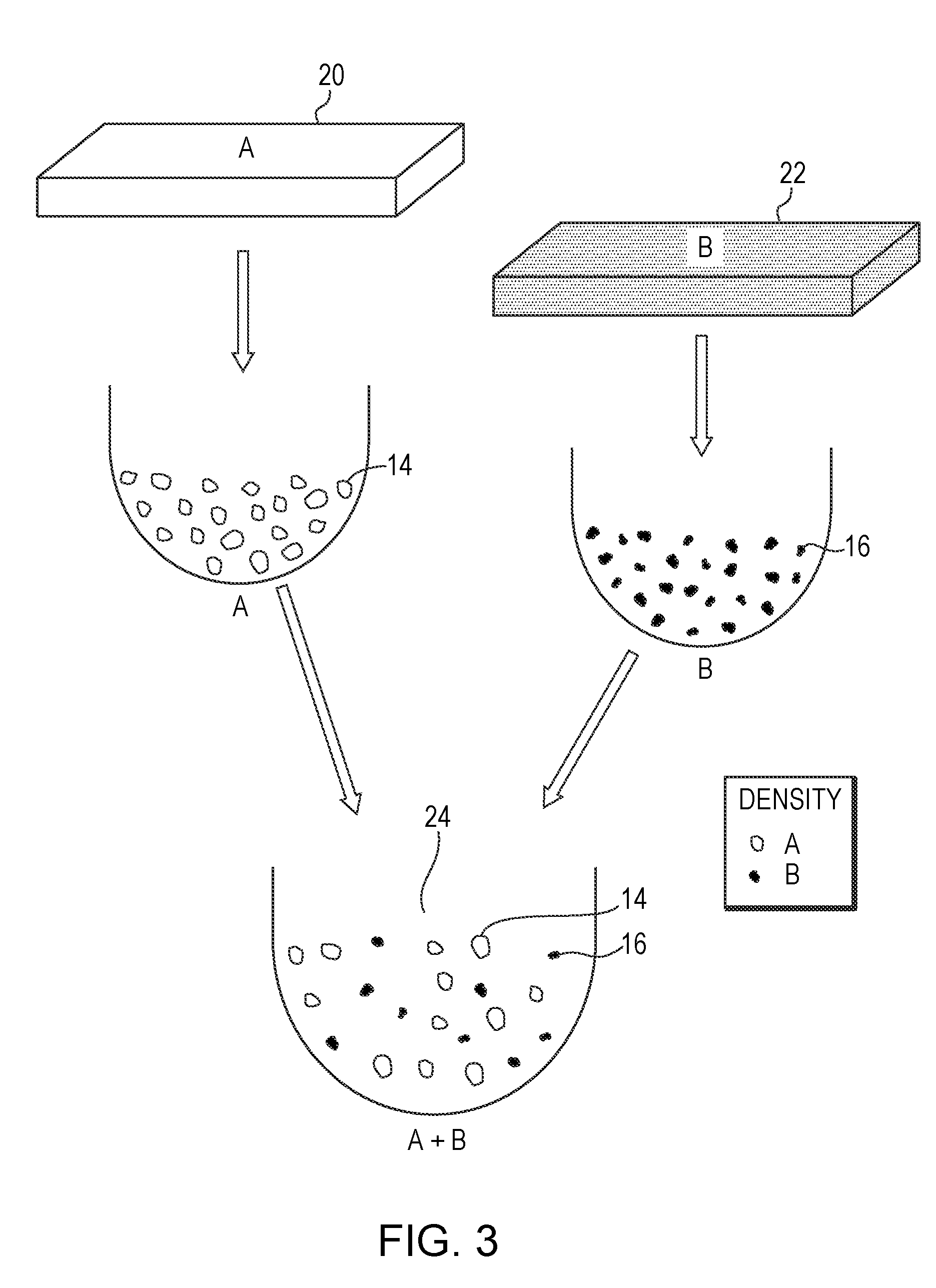Particulate Tissue Graft with Components of Differing Density and Methods of Making and Using the Same
a technology of particulate tissue and components, applied in the direction of biocide, peptide/protein ingredients, prosthesis, etc., can solve the problems of prolonging the complete restoration of damaged epithelial tissues, slow recovery of connective tissue elements, etc., to prolong the influence of ecm on the repair process, rapid initial repair response, and rapid initial resorption
- Summary
- Abstract
- Description
- Claims
- Application Information
AI Technical Summary
Benefits of technology
Problems solved by technology
Method used
Image
Examples
examples
1. Tissue Restoration of a Chronic Skin Ulcer
[0096]A mixture of ECM particles is made by taking 60 mg of particles of UBM of size 50-1000 μm and having a density of approximately 0.05 g / cm3 and 20 mg of particles of UBM of size 50-500 μm and having a density of approximately 0.25 g / cm3, for a 3:1 ratio of particles based on weight. The mixture is applied topically to a chronic skin ulcer. Within 10 days, the 0.05 g / cm3 particles are resorbed and tissue restoration is observed at the wound site. Within 30 days, the 0.25 g / cm3 particles are resorbed and tissue at the wound site is fully restored.
2. Tissue Restoration of a Kidney
[0097]A mixture of ECM particles is prepared for implantation in a kidney at a site from which a tumor has been excised. A mixture of ECM particles is made by taking 200 mg of particles of UBM of size 500-1000 μm and having a density of approximately 0.10 g / cm3 and 1000 mg of particles of UBM of size 50-500 μm and having a density of approximately 0.35 g / cm3, f...
PUM
| Property | Measurement | Unit |
|---|---|---|
| size | aaaaa | aaaaa |
| densities | aaaaa | aaaaa |
| densities | aaaaa | aaaaa |
Abstract
Description
Claims
Application Information
 Login to View More
Login to View More - R&D
- Intellectual Property
- Life Sciences
- Materials
- Tech Scout
- Unparalleled Data Quality
- Higher Quality Content
- 60% Fewer Hallucinations
Browse by: Latest US Patents, China's latest patents, Technical Efficacy Thesaurus, Application Domain, Technology Topic, Popular Technical Reports.
© 2025 PatSnap. All rights reserved.Legal|Privacy policy|Modern Slavery Act Transparency Statement|Sitemap|About US| Contact US: help@patsnap.com



